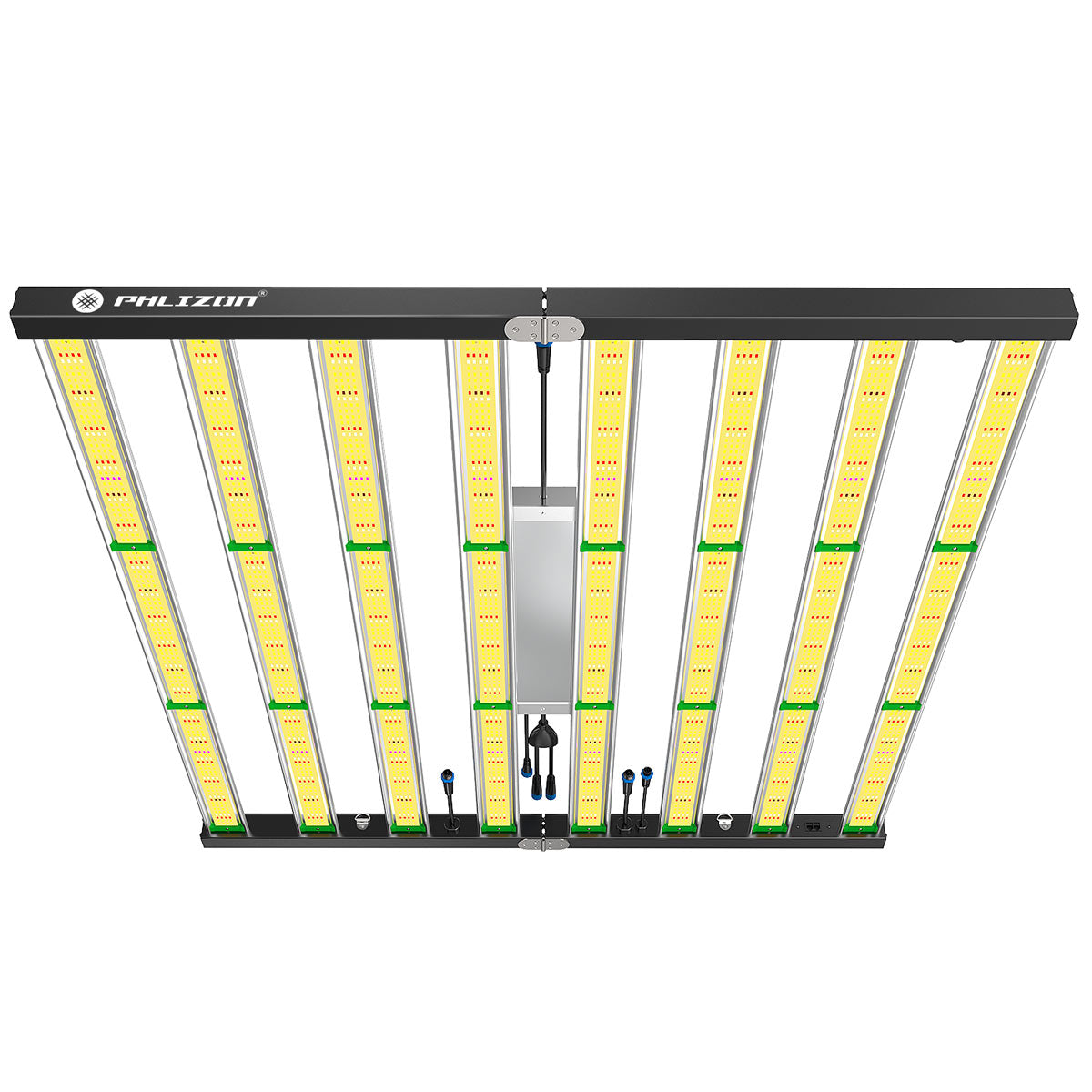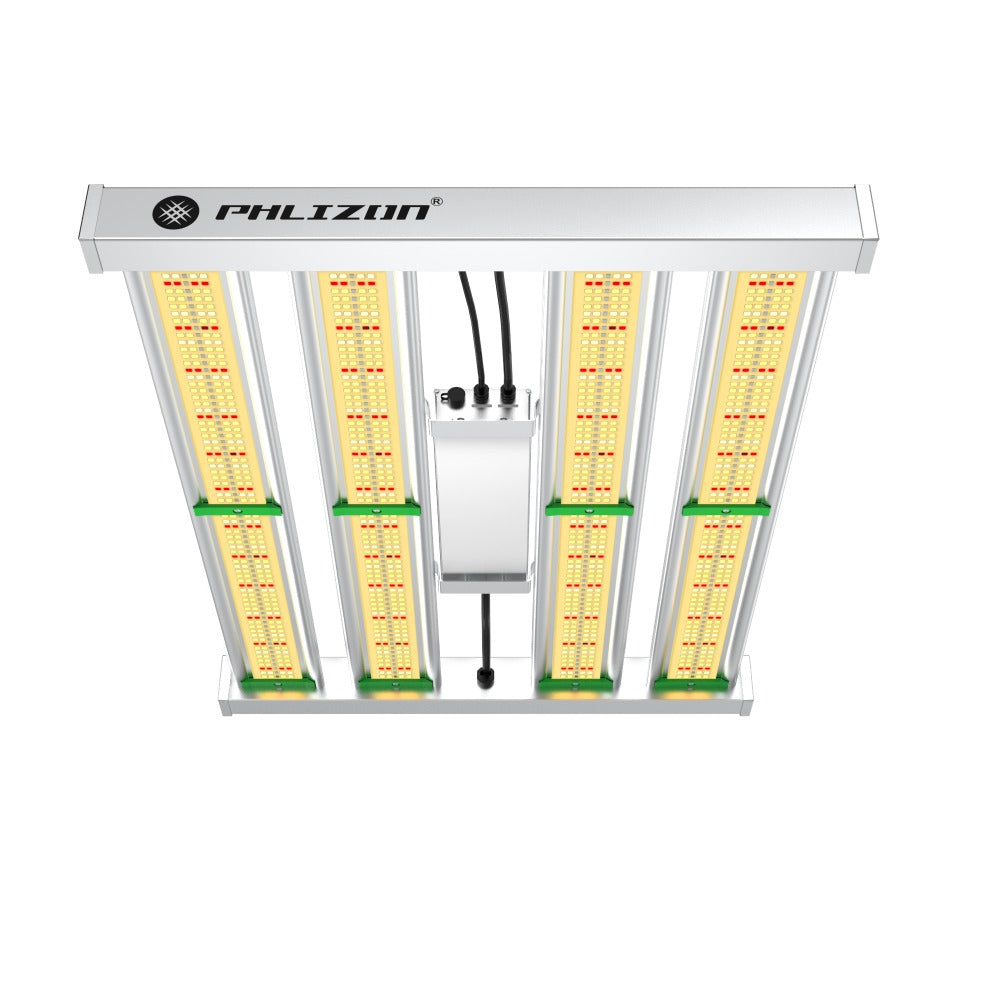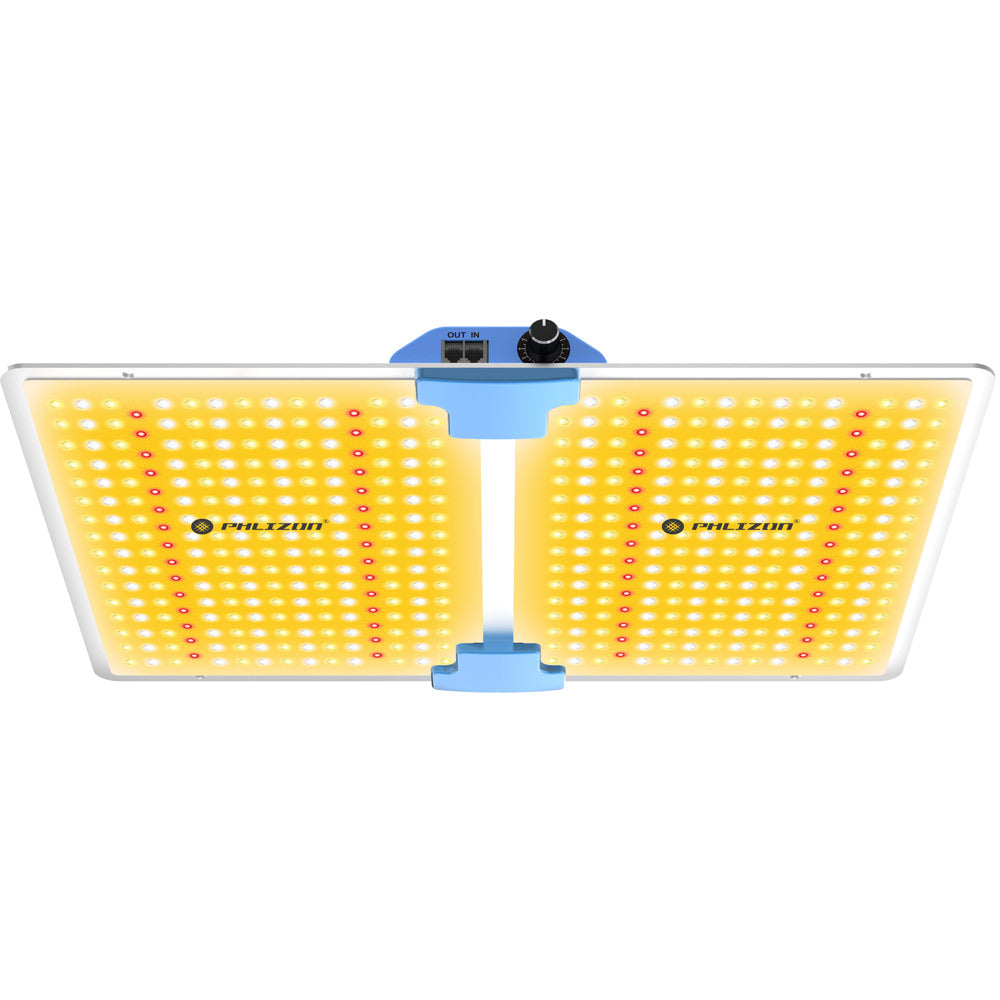Menu
10 Surprising Benefits of Using LED Grow Lights for Indoor Horticulture

Introduction
LED grow lights play a crucial role in supporting indoor plant growth in horticulture. These lights provide a specific spectrum and intensity of light that is highly beneficial for plants. Unlike traditional lighting systems, LED grow lights emit light in the wavelengths that plants require for photosynthesis, ensuring optimal growth and development.
In this article, we will explore 10 surprising benefits of using LED grow lights for indoor horticulture. These benefits include:
- Increased crop yields
- Enhanced crop quality
- Consistent growth and development
- Energy efficiency
- Tailored light for optimal growth
- Versatility and adaptability
- Year-round cultivation
- Support for healthy seedling development
- Pest management
LED grow lights have revolutionized the way we cultivate plants indoors by providing a controlled environment that mimics natural sunlight. Their ability to deliver the right combination of light enables growers to achieve remarkable results in terms of productivity and quality. Let's dive deeper into these benefits and discover the immense potential of LED grow lights in indoor horticulture.
LED grow lights have played a crucial role in transforming indoor gardening by greatly increasing crop yields in controlled settings. Numerous research studies have consistently shown that LED grow lights have a positive effect on improving productivity. For example, strawberries and tomatoes have shown impressive increases in yield when grown under LED grow lights, resulting in more fruit and faster growth. These findings highlight how important LED technology is for maximizing crop yields in indoor farms.
2. Enhanced Crop Quality Achieved with LED Grow Lights
LED grow lights are essential for improving the overall quality of crops grown indoors. Here's why:
1. Influence on Color
LED lighting allows growers to control the light spectrum, which enhances the color development in plants. For example:
- Blue light promotes anthocyanin production, resulting in deeper reds and purples in certain fruits and vegetables.
2. Impact on Flavor
LED grow lights affect the flavor of crops by creating optimal light conditions for photosynthesis and nutrient absorption. This leads to:
- More robust and flavorful produce, like intensely sweet strawberries or aromatic herbs.
3. Nutritional Value
Studies show that LED grow lights improve the nutritional composition of crops. For instance:
- Leafy greens grown under LED lighting have higher levels of vitamins and antioxidants compared to those grown under traditional lighting systems.
Specific crops known for their superior quality when cultivated under LED grow lights include:
- Tomatoes: Improved taste, texture, and color intensity.
- Lettuce: Crispier leaves, vibrant colors, and increased nutritional content.
- Herbs: Retained essential oils, resulting in stronger flavors and aromas.
By using LED grow lights, growers can produce high-quality crops that meet the demand for premium produce from consumers.
3. Maintaining Consistent Growth and Development Using LED Grow Lights
LED grow lights are essential for maintaining consistent growth and development in commercial horticulture. Here's why:
- Providing a stable light environment:LED grow lights play a crucial role in creating a controlled lighting setup for plants. They emit specific wavelengths of light that are optimal for photosynthesis, ensuring that plants receive the right amount of light energy they need to grow.
- Promoting uniform plant growth:With LED grow lights, horticulturists can create an ideal lighting condition that remains constant throughout the entire plant's life cycle. This consistency in lighting helps plants grow uniformly, with all parts receiving equal amounts of light.
- Ensuring predictable harvests:When plants experience consistent growth, it becomes easier to predict when they will reach maturity and be ready for harvest. This information is valuable for commercial horticulture operations as it allows them to plan their resources efficiently and schedule harvest activities accordingly.
- Improving overall productivity:Consistent growth directly translates to higher crop yields. When plants develop at a steady pace and receive optimal lighting conditions, they can maximize their photosynthetic potential and produce more fruits, flowers, or foliage.
LED grow lights offer precise control over the light spectrum, intensity, and duration, allowing growers to tailor the lighting conditions according to specific plant requirements. With this level of customization, horticulturists can ensure that their crops receive consistent light exposure, leading to reliable growth patterns and improved productivity.
4. Energy Efficiency: A Sustainable Advantage of LED Grow Lights
LED grow lights are known for their energy efficiency, making them a preferred choice over traditional lighting systems in indoor horticulture. This not only helps growers save on electricity costs but also contributes to sustainability efforts.
How LED Technology Achieves Higher Energy Efficiency
LED technology stands out for its ability to convert a higher percentage of electrical energy into usable light. Unlike traditional lighting systems that generate a significant amount of heat, LED grow lights produce very little heat, ensuring that most of the energy consumed is utilized for plant growth.
Here's how LED technology achieves higher energy efficiency:
- Targeted Light Spectrum:LED grow lights can be tailored to emit specific wavelengths of light that are most beneficial for plant photosynthesis. This targeted approach ensures that plants receive the exact light they need without any wastage.
- Reduced Heat Output:As mentioned earlier, LED grow lights produce minimal heat compared to other lighting options such as High-Pressure Sodium (HPS) lamps or Metal Halide (MH) bulbs. This means less energy is wasted in generating heat and more is utilized for producing light.
- Efficient Driver Systems:LED drivers are responsible for regulating the electrical current flowing through the LEDs. Modern driver systems have improved efficiency levels, resulting in less energy loss during the conversion process.
Long-Term Cost Savings for Growers
While the initial investment in LED grow lights may be higher than traditional lighting systems, their energy-efficient nature leads to significant long-term cost savings. Here's why:
- Lower Electricity Bills:LED grow lights consume less electricity compared to conventional options, translating into lower monthly utility bills for growers.
- Reduced Cooling Requirements:Traditional lighting systems generate substantial amounts of heat, necessitating additional cooling mechanisms to maintain optimal growing conditions. Since LED grow lights produce minimal heat, growers can save on cooling expenses.
- Extended Lifespan:LED grow lights have a longer lifespan than traditional lighting systems, reducing the frequency of replacements and associated costs.
By considering these factors, it becomes evident that LED grow lights offer a sustainable advantage in terms of energy efficiency, cost savings, and environmental impact.
5. Tailoring Light for Optimal Growth: Advancements Enabled by LED Technology
LED grow lights offer personalized light spectra and intensities designed to meet the specific needs of different crops, enabling them to grow optimally. Matching lighting conditions to each plant's requirements is essential for maximizing growth and quality in controlled environments. With LED technology, growers can develop customized lighting systems that have a significant impact on the overall success of indoor horticulture.
6. Embracing Versatility and Adaptability with LED Grow Lights
LED grow lights are versatile and adaptable, making them perfect for different indoor gardening setups. With these lights, growers can customize their lighting methods depending on the type of plant and its current growth stage. LED grow lights can be used effectively in various horticultural systems, including:
- Hydroponics
- Aquaponics
- Vertical farming
- Urban farming
The flexibility of LED grow lights also allows for personalized light spectrums and intensities that cater to specific crop requirements. This ensures that plants receive the right amount and quality of light they need for optimal growth and productivity in controlled environments.
7. Enabling Year-Round Cultivation through LED Grow Lights
LED grow lights have revolutionized indoor horticulture by enabling year-round cultivation, overcoming the limitations imposed by seasonal changes in external light conditions. With LED grow lights, farmers and growers can maintain continuous plant production, regardless of the time of year or geographical location.
By providing plants with the specific spectrum and intensity of light they need for growth, LED grow lights create an artificial environment that mimics natural sunlight. This means that crops can be cultivated indoors without relying on the availability of sunlight or being restricted by shorter daylight hours during winter months.
The benefits of year-round cultivation through LED grow lights are significant for both farmers and consumers.
- Farmers can enjoy increased supply stability and reduced dependence on external factors such as weather conditions. They can plan their production cycles more effectively, leading to a consistent and reliable harvest throughout the year.
- Consumers, on the other hand, benefit from a greater availability of fresh produce regardless of the season. This means access to a wider variety of fruits, vegetables, and herbs throughout the year, contributing to a healthier diet.
LED grow lights have transformed indoor horticulture into a sustainable practice that supports efficient and consistent crop production all year round.
8. Supporting Healthy Seedling Development with LED Grow Lights
LED grow lights are essential for supporting healthy seedling development and successful propagation in horticulture. They provide a controlled light environment that is crucial during the early stages of plant growth. This controlled environment helps improve seedling vigor, reduce problems like stretching or etiolation, and promote successful seed germination. LED grow lights are effective because they can deliver the specific spectrum and intensity of light needed for each growth stage. As a result, they greatly contribute to the overall success of seedling development in indoor horticultural practices.
9. Thriving with LED Grow Lights: Case Studies on Leafy Greens, Herbs, and Fruits
In this section, we will look at how LED grow lights can be used effectively for growing various types of crops indoors. We will specifically discuss their advantages when it comes to cultivating leafy greens, herbs, and fruits.
1. Growing Leafy Greens with LED Lights
Leafy greens are known for their high nutrient content and quick growth cycle. Here are some popular varieties that thrive under LED lighting:
- Lettuce: LED lights provide the perfect spectrum for lettuce growth, resulting in vibrant and crisp leaves.
- Spinach: Similar to lettuce, spinach also benefits from the balanced light spectrum of LEDs, leading to healthy and abundant foliage.
- Kale: This nutrient-dense superfood flourishes under LED grow lights due to their ability to mimic natural sunlight.
2. Cultivating Herbs using LED Lighting
Herbs are widely used in cooking and have gained popularity among home gardeners. Here are a few herb varieties that do well with LED grow lights:
- Basil: LED lights promote compact and bushy growth in basil plants, enhancing their flavor and aroma.
- Mint: With the right combination of red and blue LEDs, mint plants can thrive indoors, providing a fresh supply of leaves.
- Parsley: LED grow lights offer the necessary light intensity for parsley plants, allowing them to develop lush foliage.
3. Growing Fruits with LED Grow Lights
While most fruiting plants require intense sunlight for optimal fruit production, certain varieties can still be grown indoors with the help of LED grow lights:
- Strawberries: LED lights can simulate the sun's rays needed for strawberry plants to flower and bear fruit.
- Tomatoes: Compact tomato varieties, such as cherry tomatoes, can be successfully grown under LED lighting systems.
- Peppers: LED grow lights provide the right light spectrum for pepper plants, supporting their growth and fruiting process.
By understanding the specific lighting needs of different crops, you can make the most of LED grow lights and create an ideal environment for your indoor garden.
10. Exploring the Full Potential of LED Grow Lights in Indoor Horticulture
LED grow lights have already revolutionized indoor horticulture, but the future holds even more exciting advancements in this field. As technology continues to evolve, we can expect to see further improvements and innovations that will enhance the benefits of using LED grow lights for indoor gardening. Here are some key points to consider:
1. Advancements in LED Technology
Researchers and manufacturers are constantly working to improve the efficiency, spectrum, and durability of LED grow lights. This means that growers can expect even better performance and longevity from these lighting systems.
2. Smart Lighting Solutions
The integration of smart technology into LED grow lights allows for precise control over lighting conditions. Features such as automated scheduling, remote monitoring, and adaptive lighting can optimize plant growth and reduce energy consumption.
3. Increased Customization
LED grow lights offer a wide range of customizable options, including adjustable spectra and intensities. This allows growers to tailor the light output to suit the specific needs of different plants at various growth stages.
4. Vertical Farming Innovations
LED grow lights play a crucial role in vertical farming systems, where crops are grown in stacked layers. As vertical farming becomes more widespread, LED grow lights will continue to be a vital component in maximizing productivity and space utilization.
The future of LED grow lights in indoor horticulture is bright. With ongoing advancements in technology and increased customization options, these lighting systems will continue to offer numerous benefits for both home gardeners and commercial operations. Embrace the power of LED grow lights to unlock the full potential of your indoor garden or farm.
Conclusion
LED grow lights have proven to be a game-changer in indoor horticulture, offering a multitude of benefits such as increased yields, enhanced crop quality, and year-round productivity.
Embracing LED technology can empower you to optimize your plant-growing endeavors, whether it's a small-scale herb garden or a large hydroponic facility.
The future of indoor horticulture looks promising with ongoing advancements in LED lighting, paving the way for a more sustainable and food-secure world.
Featured blog
- Choosing a selection results in a full page refresh.

















